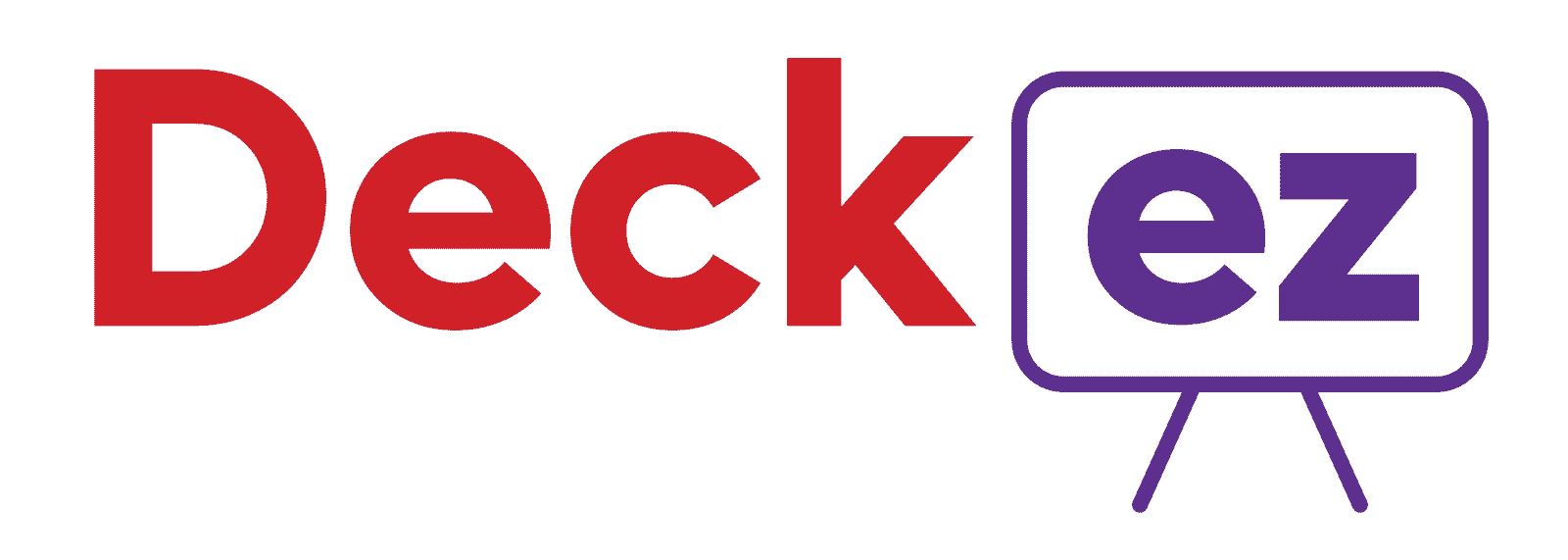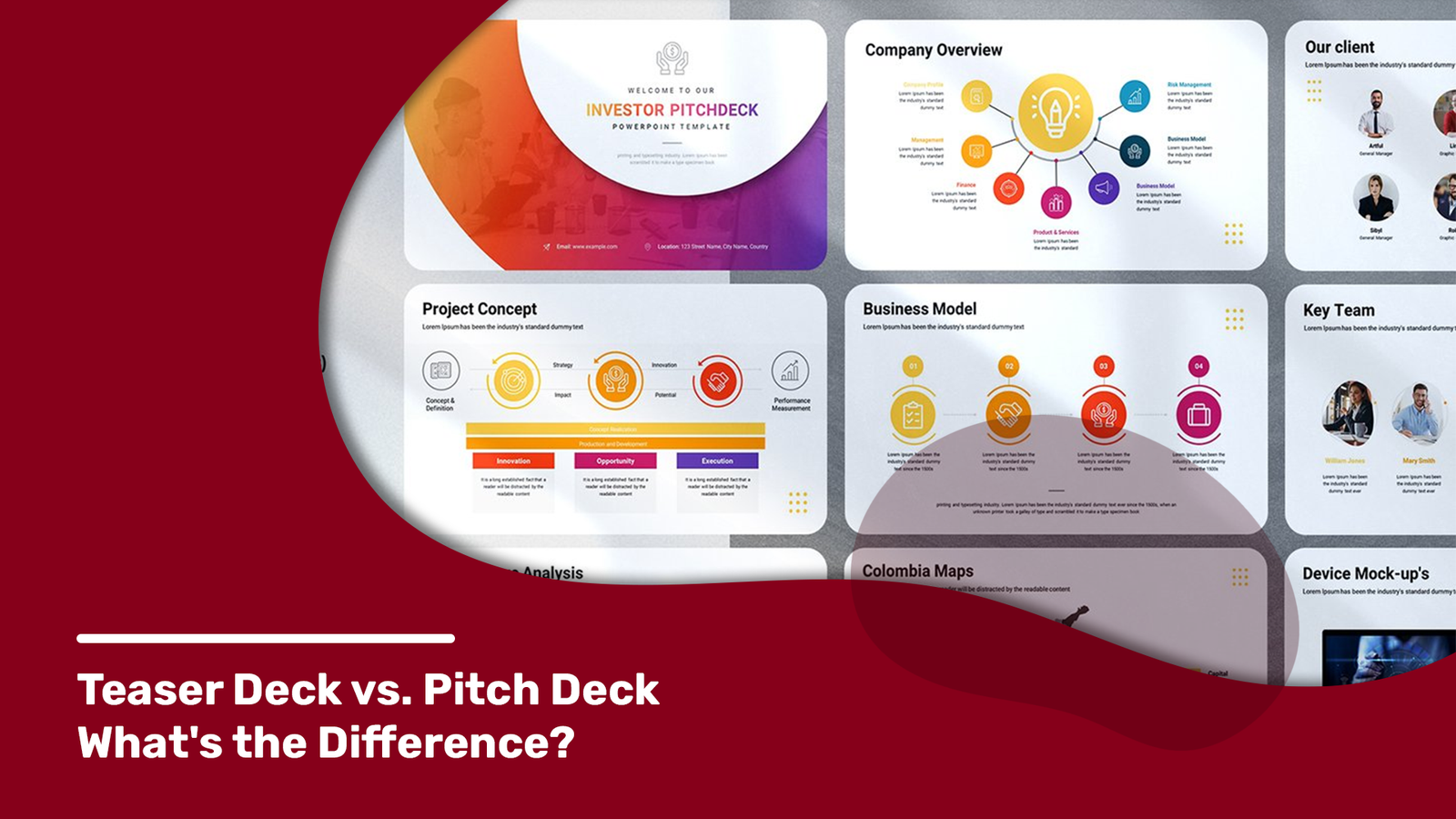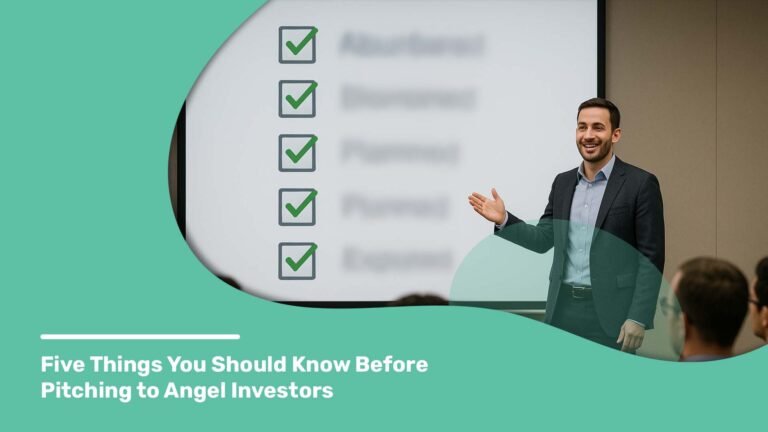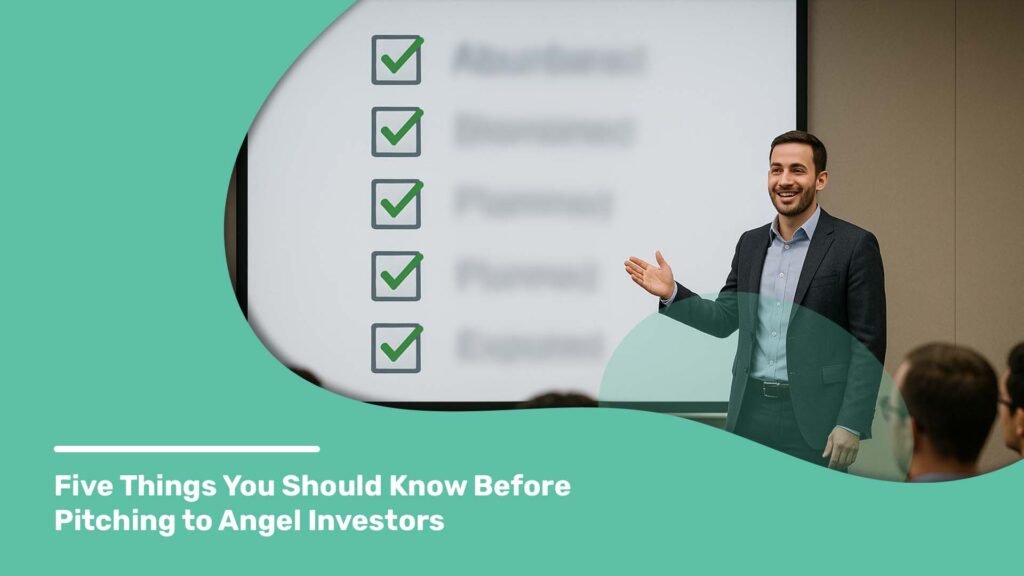A teaser deck is a brief, top-level document meant to grab the attention of investors and gain a meeting, while a pitch deck is a full presentation covering the business model, market size, and financials to get invested. Leveraging the proper deck at the appropriate stage amplifies investor attention and funding achievement.
Introduction
For any business or startup looking to raise money, presentation decks are essential to getting funding. Not all investor presentations, though, play the same role. One of the biggest mistakes founders make is bringing the wrong kind of deck to the wrong point in the fundraising process. Two types of investor decks essential for successful fund-raising efforts—the teaser deck and the pitch deck—are designed for different uses.
A teaser deck offers a top-down summary of an opportunity for business, intended to generate initial investor interest. A teaser deck is brief, graphical, and intended to get an appointment. By contrast, a pitch deck is a detailed, thorough presentation describing the entire business plan, market opportunity, financial projections, and growth strategy intended to convince investors to invest in the venture.
In this guide, we will explore the differences between these two decks, when to use them, what investors expect, and how to create compelling presentations that maximize your fundraising potential.
Why Understanding the Difference Matters
Numerous startups confuse teaser decks and pitch decks, causing the wrong expectations on the part of investors. Too detailed a teaser deck will suffocate potential investors too early in the process, whereas too superficial a pitch deck will not find funding when investors need exhaustive insight.
By understanding the difference and tailoring your approach accordingly, you can:
- Optimize your investor outreach strategy.
- Ensure that your messaging is clear and compelling.
- Improve investor engagement by delivering the right information at the right time.
- Increase the likelihood of securing follow-up meetings and funding.
What is a Teaser Deck? A Quick Overview
A teaser deck is a 5-10 page investor document giving a high-level summary of a startup with the goal of stirring interest and obtaining meetings. Unlike a pitch deck, it’s more about market potential, problem-solution fit, and traction than about exact financials.
Purpose of a Teaser Deck
- Generate initial investor interest.
- Secure a follow-up meeting or a request for more information.
- Provide a quick overview of the business’s value proposition.
Key Elements of a Teaser Deck
- Cover Slide: Attractive and professional design featuring the company name, logo, and tagline.
- Problem Statement: A concise explanation of the market problem.
- Solution Overview: Briefly describe the unique solution your business offers.
- Market Opportunity: High-level industry data showing the total addressable market (TAM).
- Business Model: A simplified version of how the company generates revenue.
- Traction Snapshot: Early user adoption, revenue growth, or partnerships.
- Competitive Advantage: A visual comparison showing differentiation from competitors.
- Call to Action: Encouraging investors to take the next step, such as scheduling a call.
What is a Pitch Deck? A Comprehensive Breakdown
A pitch deck is a full investor presentation that provides detailed insights into a company’s business model, revenue streams, competitive analysis, and financials.
Purpose of a Pitch Deck
- Convince investors to fund your startup.
- Present a well-researched and structured business case.
- Demonstrate traction, scalability, and a clear growth strategy.
Key Elements of a Pitch Deck
- Cover Slide: Engaging branding and a compelling one-line pitch.
- Problem Statement: Clearly define the pain points your business solves.
- Solution Slide: Introduce the product/service and how it uniquely addresses the problem.
- Market Opportunity: Showcase market size, growth potential, and trends.
- Business Model: Explain how the business makes money (subscriptions, licensing, direct sales, etc.).
- Traction & Milestones: Highlight revenue, partnerships, and key achievements.
- Go-To-Market Strategy: Detail marketing and sales plans for customer acquisition.
- Competitive Analysis: Position the company against competitors with key differentiators.
- Financial Projections: Revenue, expenses, customer acquisition costs, and profitability forecasts.
- The Team: Showcase founders, leadership, and key hires.
- Funding Ask: Clearly state how much funding is required and how it will be used.
- Exit Strategy (Optional): Show investors the potential return on investment (ROI).
Key Differences Between a Teaser Deck and a Pitch Deck
| Factor | Teaser Deck | Pitch Deck |
| Length | 5-10 slides | 12-20 slides |
| Purpose | Generate interest, secure a meeting | Secure investment |
| Content Depth | High-level overview | Comprehensive details |
| Investor Focus | Curiosity and initial engagement | Due diligence and investment decision |
| Use Case | Early-stage outreach | In-depth investor presentation |
When to Use a Teaser Deck vs. a Pitch Deck
Use a Teaser Deck When:
- Reaching out to investors for the first time.
- Seeking to gauge investor interest before disclosing detailed financials.
- Providing a quick, compelling snapshot of your business.
Use a Pitch Deck When:
- Presenting in formal investor meetings.
- Demonstrating strong traction and growth potential.
- Seeking to close funding deals.
What Investors Expect from Each Type of Deck
Teaser Deck Expectations:
- Concise, visually appealing slides.
- A compelling market opportunity and a unique value proposition.
- Clear call-to-action prompting follow-up discussions.
Pitch Deck Expectations:
- Comprehensive business model, financials, and growth strategy.
- Detailed data, competitive analysis, and market validation.
- A well-rehearsed, engaging delivery of the deck.
How to Transition from a Teaser Deck to a Full Pitch Deck
- Expand Key Sections: Convert high-level overviews into detailed analysis.
- Add Supporting Data: Include financial projections, customer testimonials, and case studies.
- Strengthen Your Narrative: Ensure a compelling storyline that flows naturally.
- Refine Design: Maintain consistent branding and readability.
- Rehearse and Adapt: Practice for investor meetings and tailor responses to anticipated questions.
Common Mistakes to Avoid When Creating Both Decks
- Overloading slides with excessive text and data.
- Failing to tailor content to investor interests.
- Neglecting visual appeal and readability.
- Not clearly defining the funding ask and expected ROI.
- Ignoring competitor analysis and market positioning.
Conclusion
Grasping the distinction between teaser decks and pitch decks is important in order to effectively communicate with investors. Utilizing the appropriate deck at the correct stage, startups can optimize interactions, secure follow-up meetings, and enhance the likelihood of securing capital. For startups serious about fundraising success, working with a professional pitch deck design service provider ensures your decks are visually compelling, well-structured, and investment-ready.
FAQ
1. What is the main purpose of a teaser deck compared to a pitch deck?
A teaser deck is designed to generate initial interest and spark a conversation, whereas a pitch deck provides a detailed overview of the business to secure investment.
2. How many slides should a teaser deck typically contain?
Teaser decks usually consist of 5-10 slides that cover the key highlights of the business.
3. Can I use the same design template for both a teaser deck and a pitch deck?
While you can use similar design elements for consistency, the content and level of detail should differ significantly.
4. What are some common pitfalls to avoid when creating these decks?
Avoid overloading slides with information, using inconsistent branding, and failing to tailor your message to your audience’s expectations.
5. How can I improve my pitch deck to better capture investor interest?
Focus on clear messaging, compelling visuals, and data-driven insights, and ensure that each slide has a purpose that drives your narrative forward.









